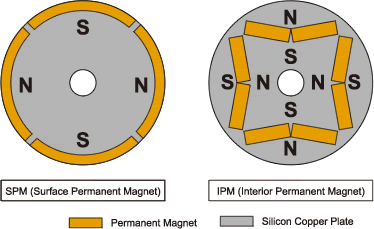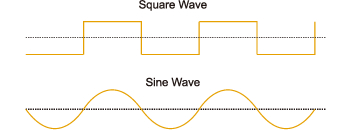Motor Technology
A conventional SPM (surface permanent magnet) motor has a structure in which a permanent magnet is attached to the rotor surface. It only uses magnetic torque from a magnet. On the other hand, the IPM motor uses reluctance through magnetic resistance in addition to magnetic torque by imbedding a permanent magnet in the rotor itself.
Example) SPM.IPM Motor Rotor Structure

IPM (Interior Permanent Magnet) Motor Features
High torque and high efficiency
High torque and high output is achieved by using reluctance torque in addition to magnetic torque.
Energy- saving operation
It consumes up to 30% less power compared to conventional SPM motors.
High- speed rotation
It can respond to high-speed motor rotation by controlling the two types of torque using vector control.
Safety
Since the permanent magnet is embedded, mechanical safety is improved as, unlike in a SPM, the magnet will not detach due to centrifugal force.
Vector Control Features
While a conventional system (120 degree conduction system) has the current impressed in the motor as a square wave, a vector control impresses voltage which turns into a sine wave towards the rotor's position (angle of the magnet), so it becomes possible to control the motor current.

This feature has the following advantages.
- Operation that is efficient and with low torque pulsation can be attained.
- By being able to control the motor current according to the angle of the magnet, smoother acceleration and accurate stop system can be achieved.
- It can instantly respond to speed changes during load fluctuations.
- Compared with conventional systems, the degree of speed regularity greatly improves when lifting or lowering, regardless of the load.

Example of MLP usage










